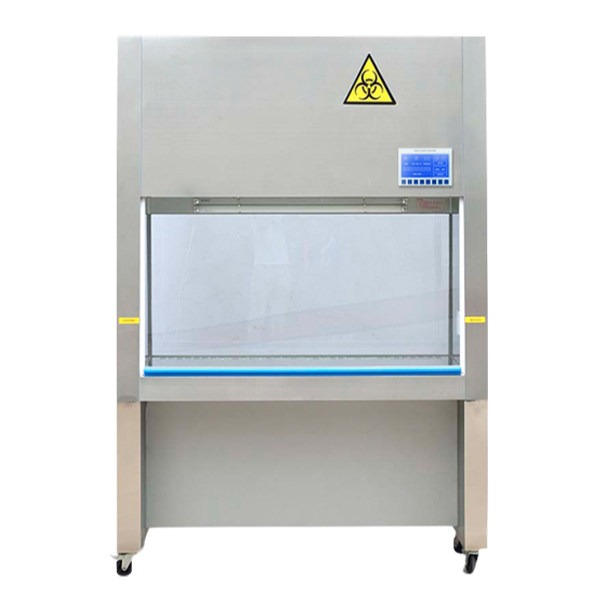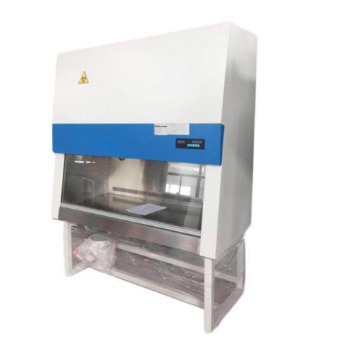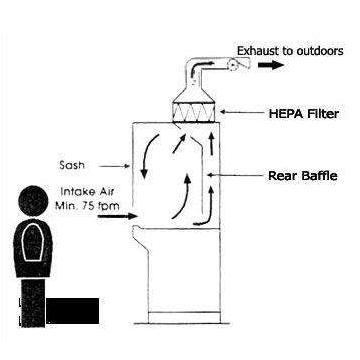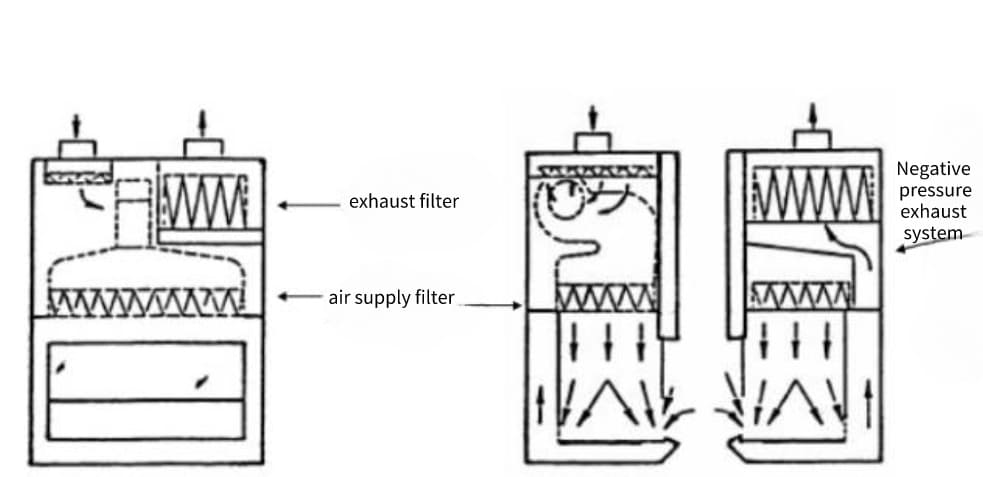Cell culture is a critical component of biological research because it allows scientists to study and manipulate cells in a controlled environment. However, it is critical to ensure the safety of both researchers and the surrounding environment. Biosafety cabinets (BSCs) are critical in cell culture laboratories for maintaining aseptic conditions and limiting the spread of pollutants. In this article, we discuss on the topic of biosafety cabinet for cell culture, exploring the significance of biosafety cabinets in cell culture and their essential features for promoting a safe and effective research environment.

The Importance of Biosafety Cabinets for Cell Culture
Because cell culture activity includes the manipulation of living cells, a sterile environment is required to get accurate and reproducible findings. The significance of biosafety cabinets in cell culture is multidimensional and can be summed up in a few essential points.
1. Personnel Protection
Biological Safety: Biosafety cabinets provide as a barrier between the researcher and potentially dangerous biological materials, shielding laboratory personnel from pathogens and allergens found in cell cultures.
Inhalation Hazards: The cabinet’s controlled airflow prevents dangerous aerosols from being inhaled, protecting the safety of researchers working with volatile chemicals or biological agents.
2. Product Protection
Cell Culture Integrity: The sterile environment generated by biosafety cabinets protects cell cultures by preventing external contaminants from interfering with cell viability and experimental results.
Quality and Reproducibility: Maintaining a controlled environment helps to ensure the reproducibility and consistency of experimental results, which is critical for scientific legitimacy and progress.
3. Regulatory Compliance
Biosafety Levels (BSL): Biosafety cabinets help laboratories comply with biosafety level requirements. The appropriate BSC class is selected based on the risk level associated with the biological materials used in cell culture work.
Quality Assurance: Regular certification and maintenance of biosafety cabinets ensure they meet safety standards and regulatory guidelines, fostering a culture of responsible laboratory practices.
4. Aseptic Techniques
Sterile Working Conditions: Biosafety cabinets create an aseptic environment, allowing researchers to conduct cell culture work without compromising the sterility of reagents, equipment, and cell lines.
Reduced External Interference: By minimizing external contaminants, BSCs enable researchers to focus on refining aseptic techniques critical for successful cell culture experiments.
5. Environmental Protection
Airborne Pathogen Release: BSCs with proper exhaust systems prevent the release of potentially harmful agents into the laboratory environment, contributing to overall environmental safety.
Waste Management: Containment within biosafety cabinets facilitates proper disposal of contaminated materials, reducing the risk of environmental contamination.

Key Features of Biosafety Cabinets for Cell Culture
1. HEPA Filtration
High-Efficiency Particulate Air (HEPA) filters are essential in biosafety cabinets because they ensure that the air within the cabinet is free of pollutants.
Prevents aerosols or microbes from escaping from the cabinet, ensuring a sterile environment for cell cultivation.

2. Inflow and Downflow Air Velocity
Proper airflow patterns within the cabinet are critical for contamination prevention.
The inflow and outflow velocities are precisely adjusted to maintain a barrier between the researcher and the cell culture, reducing the danger of cross-contamination.

3. UV Light and Disinfection
UV lights are used in some biosafety cabinets to sanitize the interior surfaces.
When the cabinet is not in use, UV light exposure is often employed to reduce the possibility of microbial infection.
4. Ergonomic Design
User comfort and safety are addressed through the ergonomic design of biosafety cabinets, allowing researchers to work for extended periods without compromising safety.
Features such as adjustable work surfaces, footrests, and armrests contribute to a comfortable working environment.
5. Class II Type Design
Class II biosafety cabinets provide comprehensive protection, including personnel, environmental, and product protection.
Type A2 cabinets are commonly used for cell culture work, featuring recirculated airflow and exhaust systems for enhanced safety.
6. Gas and Vacuum Connections
Provision for gas and vacuum connections allows for the integration of specialized equipment, such as CO2 incubators, directly into the biosafety cabinet.
This feature enhances the efficiency of cell culture processes while maintaining containment.
7. Seamless Surfaces for Easy Cleaning
Smooth, stainless steel surfaces with minimal joints or seams facilitate easy cleaning and decontamination.
Ensures that the biosafety cabinet can be effectively sanitized between experiments to prevent cross-contamination.

8. Audible and Visual Alarms
Alerts for issues such as low airflow velocity or filter saturation enhance user awareness and safety.
Alarms notify researchers of potential problems, allowing for timely corrective actions to maintain a secure working environment.
9. Access Ports and Pass-Through Chambers
Equipment and supplies can be added to the cabinet with built-in access ports, maintaining containment.
A safe method of moving objects in and out of the cabinet without exposing the cell culture to outside pollutants is through pass-through chambers.
10. Vibration and Noise Control
For cell culture activities, it is essential to minimize vibrations and noise because these elements can affect cell development and the precision of experimental data.
Superior biosafety cabinets are engineered to minimize vibrations and run silently, fostering the ideal working atmosphere.
Conclusion
In cell culture labs, biosafety cabinets are essential pieces of equipment that protect researchers, experimental materials, and the surrounding area from potential risks. Scientists can confidently proceed with their research while avoiding hazards and guaranteeing the repeatability of their findings by placing a high priority on biosafety in cell culture laboratories.
